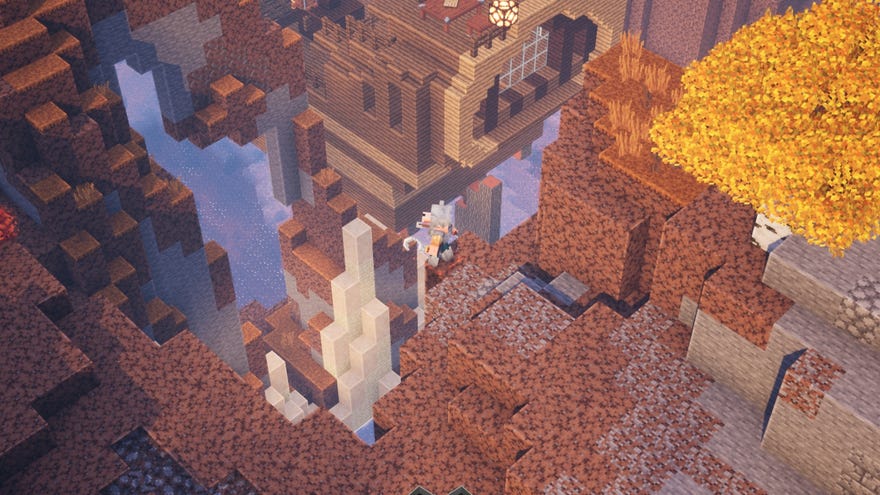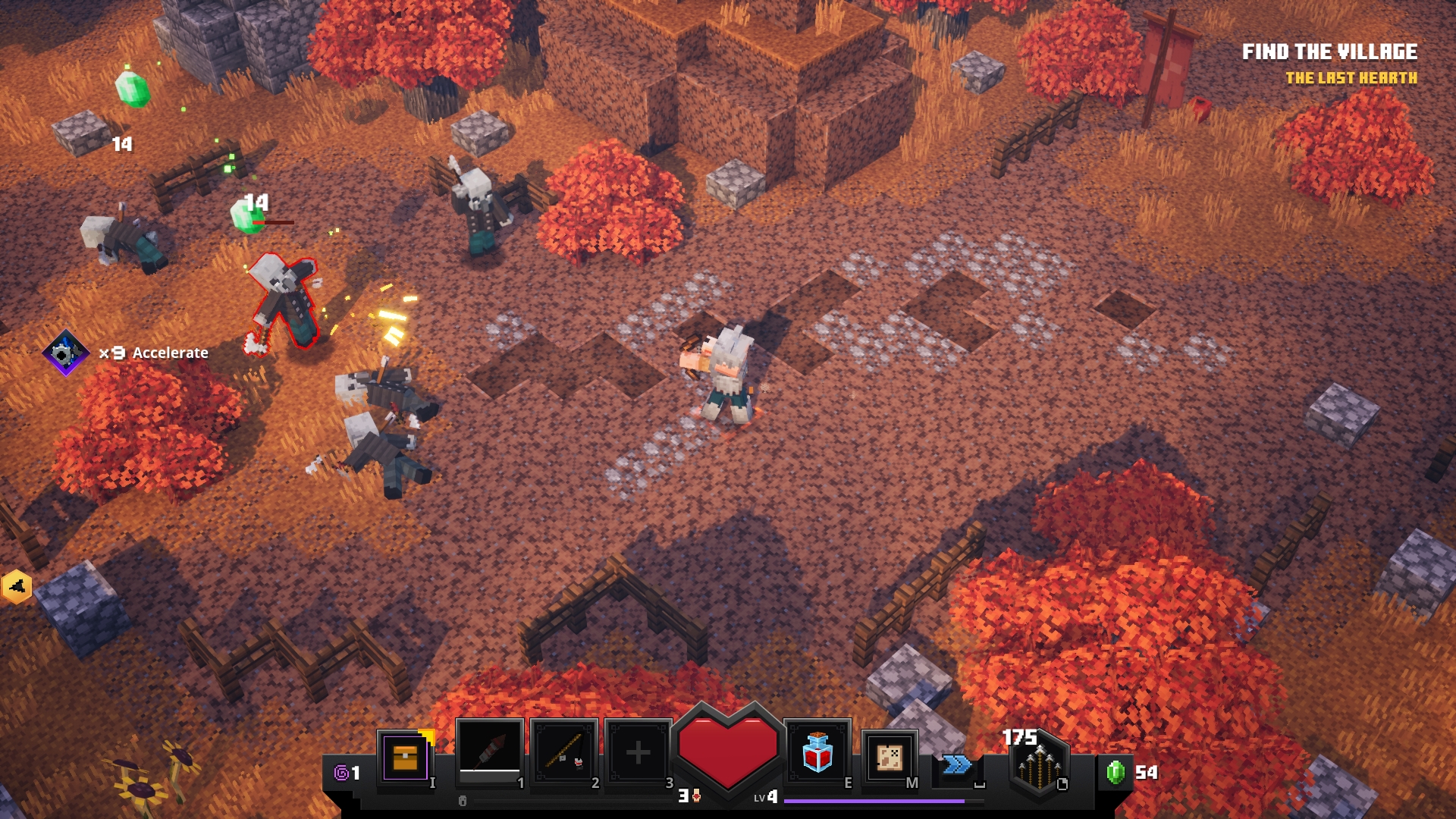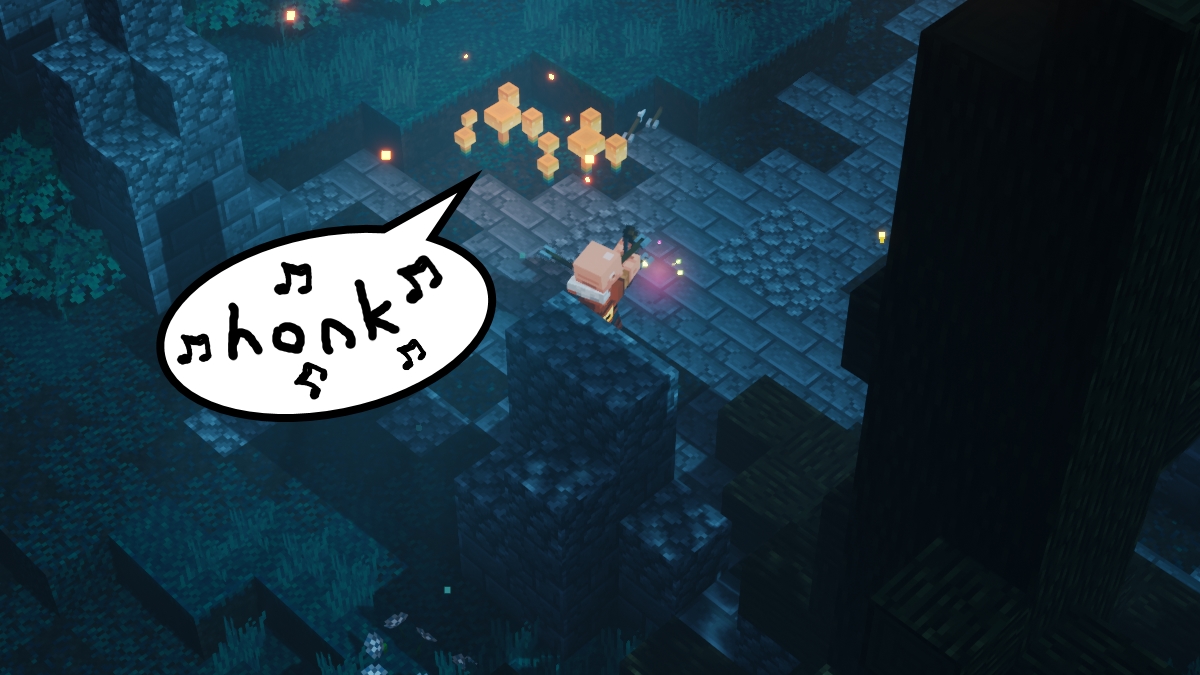Hands-on preview: Minecraft Dungeons is an unexpected treasure
License to illager
When Minecraft Dungeons was first announced, I thought it was a bit of an odd call. Dungeon crawlers are popular, and Minecraft is popular, but… a Minecraft dungeon crawler? Surely, I figured, a switch to isometric dungeoneering would lose all of Minecraft’s creative, construction-toy charm in translation, and I just couldn’t see Minecraft’s gently strange, cuboid world as an intuitive setting for a Diablolike lootstabber. It all seemed a bit of a mismatch, like making an arcade fighting game based on Frasier, or an RTS about the Teletubbies.
But, as you’ve probably now had time to process, both of those ideas are completely amazing. And so, to my surprise and delight, is Minecraft Dungeons. I’ve had a good play with the beta build ahead of its postponed launch on May 26th, and what I’ve found is an extremely slick, extremely pretty dopamine delivery system, that somehow strings together the best of two seemingly disparate worlds.
“Complex but not complicated,” is how executive producer David Nisshagen describes the game as I watch him play it, before quietly chiding himself. “It sounds like a cliché, I know, but that’s what it is. We wanted it to be approachable, so if you put this game in anyone’s hands, they can take it and run with it, and hopefully start having fun very quickly”.
It’s certainly not hard to get the hang of. After a gently moody intro cutscene featuring a squidwardesque illager in the process of becoming the game’s main baddie (accompanied by a narrator doing a properly impressive Galadriel impersonation), you choose an outfit for your blocky little adventurer, and get stuck in. There are few surprises. You click yourself along a winding path, occasionally stopping to click on zombies and skeletons as they assail you, and you defeat them in fights.
There are melee weapons and projectile weapons, and cooldowns aplenty to manage. And when your foes burst, treats fall out of their bodies. There are emeralds, which you can then spend on things in your camp area between levels, and XP, which comes in the form of the little glowy pingy lights familiar from Minecraft. You also, of course, get gear. And here’s where the game takes its most interesting divergence from the classic hack and slash playbook. Because unlike in other fighty RPGs, your character in Minecraft Dungeons has no stats except XP level and wealth, and there’s no class specialisation at all.
“You are what you wear,” explains Nisshagen, showing me a character equipped with a sort of a knight’s helm and a glowing scythe, and tooled up with a handful of artefacts. To show me what he means, he swaps out a few items. It takes him about nine clicks and about six seconds, and when the refit is complete, the character has a new set of stats, based on the damage and health boosts conferred by each piece of their new kit.
But more than that, they now have a completely different play style and suite of abilities, too. This versatility is thanks to the enchantments system, which is loosely based on the system from its parent game. Rather than earning you a choice of stat increases, levelling up in Minecraft Dungeons gains you enchantment points. You spend these on your equippable items, either imbuing them with new powers such as damage over time, life-leeching or the like, or upgrading the enchantments they had when you found them.
Pleasingly, you don’t have to think too hard about any of this, because even if you end up with a build that turns out to be a complete disaster, it’s easy as anything to swap back over. Indeed, even If you sell your enchanted stuff to the vendor in the quest hub, you get all your enchantment points back, so you’ll have them all free to put into other items. It’s a model that never penalises experimentation, and it’s a great accent to the looting side of the game. “This is pushing my Borderlands buttons,” I admit to Nisshagan, as his new build runs out into a dungeon and starts firing off new, explosive crossbow shots, “only without all the admin of comparing guns with a calculator to hand.”
But then, if you are the sort of person who does enjoy a bit of minmaxing, Minecraft Dungeons lets you wade a lot more deeply into the numbers than you might expect. “The enchantments really stack up,” Nisshagen says, as he shows me a pickaxe that exerts a gravitational pull on nearby mobs when it strikes. “Especially so when you’re playing multiplayer, too. There’s a lot of thinking you can do about how the various artefacts and effects work together, and you can get really technical in figuring out how to optimise builds.”
This, when it comes down to it, is how Dungeons bridges the gap between genre and subject matter that left me so puzzled to begin with. Because while it’s simple enough for a child to grasp the basics of, and a vast number of familiar sights and sounds from Minecraft, there’s enough going on under the surface for experienced dungeon crawlers to get their teeth into. “We wanted to make a game which a parent and a child could play together,” says Nisshagen, “with both of them getting exactly what they want out of the experience”.
It’s a lot like Minecraft itself in that regard, now I come to think of it: a game which can be happily pootled around in by a six-year-old, but can also act as a sandbox for a group of 30-somethings to lose their minds in and build vast sculptures of trains with functioning arses. Something for everyone, y’know. And it’s an ethos which extends to the whole structure of Dungeons.
Its story currently takes you through ten areas. There’s a spooky forest, a redstone mine, a desert canyon, and several others, all based roughly on Minecraft biomes, and each one is relatively predictable. While the layout of the paths through them will be randomised anew each playthrough, there are landmarks such as narrative moments and boss fights that will occur in the same places every time.
But within these levels can be found hidden entrances to a second tier of sprawling, completely procedurally generated dungeons. The one I’ve played - an area called the Creepy Crypt, tucked away in a quiet corner of the first level - took around 45 minutes to clear, and played out completely differently every time I attempted it. While I’d probably look to a more straightforward path through the standard levels if I was playing alongside my daughter, if I was playing with mates, I’d make a beeline for these more intense, less predictable areas for some proper loot grinding.
When it comes down to it though, it wouldn’t be fair to represent Minecraft Dungeons as a two tier game, with some elements for kids and some for grownups. A lot of it, I expect, will just appeal across the board. Minecraft itself was wildly popular with adults long before it became a playground craze, after all, thanks in large part to its whimsical charm, and its uniquely oddball, lo-fi aesthetic. And despite having been designed from the ground up to look beautiful, rather than having been dragged there from janky beginnings as a passion project, Dungeons manages to carry a surprising amount of Minecraft’s atmosphere.
In fact, I was surprised to learn that some things which I thought had been replicated from Minecraft, had in fact been conceived during Dungeons’ development, and made their way back upstream like randy salmon. Illagers, for example, the angry-eyebrowed, grey antagonists of last year’s Village & Pillage update, let loose their first belligerent “HARR” in an early build of Dungeons. “We needed a humanoid enemy mob that you couldn’t run away from,” says Nisshagen, “so we came up with illagers. And then the Minecraft team saw them and thought ‘hmm, we could use these…”
You can see from the screenshots just what careful work Nisshagen’s team have done to translate Minecraft’s visual grammar into a world where not a single block can be constructed or destroyed. There’s a peculiar joy to be had in running around and noticing the textures of silver birch or mossy cobblestone, for example, and more than once I’ve walked past an NPC house and thought “huh, nice build”. But for me at least, it was the sound design that really anchored Dungeons to its oh-so-familiar predecessor.
Some of it’s just a question of fidelity: the bizarrely loud grass-crunching footsteps of sheep, for example, and their bleats, which are etched more deeply into my memory than the sounds of actual sheep. And while the music is more fittingly rambunctious and cartoony than the melancholy beauty of Daniel “C418” Rosenfeld’s work on Minecraft, there are moments where composer Peter Hunt gets out his tinkly, rainy day piano for a skillful bit of pastiche.
But there are new touches as well, which somehow have the air of being “classic Minecraft”, even though that’s arguably a meaningless term, given just how much the direction of Mojang’s golden goose has meandered over its 11-year life. To give just one example: in the spooky forest, there are clumps of golden mushrooms that make a sort of musical, slightly ghostly honking sound when you walk over them, which is always in harmony with whatever music is playing at the time.
The fungal honking has no impact on play, of course, but it’s the sort of unusual little audio flourish that feels at home in a Minecraft game, like the unnerving cat noises made by ghasts, or the creepy sounds which play - sometimes faintly, and sometimes at deafening volume - when you look in the direction of a recently opened cavern.
According to Nisshagen, the musical mushrooms were the work of one of the level designers, who created them in a moment of inspiration during an “experimentation Friday”: a weekly afternoon session where everyone on Dungeons’ 23-strong team is set loose to work according to their own whims. Nisshagen is well aware that many of Minecraft’s most beloved features came about as a result of developers coding things just because they felt like it, and so has done everything he can to foster the same atmosphere in his part of Mojang.
“It’s more challenging with a multi-platform release, though,” he says, referring to Dungeons’ porting to PlayStation, XBox and Switch, which is being carried out by UK-based studio Double Eleven. Console platform owners, he explains, tend to want highly detailed design documentation a long time in advance of release, which makes it harder to be situational and opportunistic with feature development. “But it’s not like you can write a design document that plans for someone to come up with harmonising mushrooms on the spur of the moment.”
In any case, I’d say Nisshagen’s team are making a good job of walking a tightrope between the playful design approach that made Minecraft as unique as it was, and the monumental, Serious Business mentality that can strangle the charm of such things when they become enormously successful. I don’t think Minecraft Dungeons is going to end up being the game of choice for hardcore dungeon crawlers, but I think it’s going to pleasantly surprise a lot of people, as it proves more heavyweight than expected. And of course, there's no guarantee that the fun I had with the start of the game will translate to excellence throughout, but the odds seem good.
In fact, in the process of writing about it, I’ve finally realised what it reminds me of. And although Nisshagen told me about a lot of games that influenced Dungeons, including the Warhammer: Vermintide games, Left 4 Dead and inevitably Diablo, the games I’m thinking of have nothing to do with dungeons at all. I’m thinking, of course, of the Lego games. They, too, adapted a beloved construction toy into an unusual genre, and they did so with far more polish and thoughtfulness than is often lavished on a spin-off. They were games that parents used their kids as an excuse to buy for themselves, and I’m pretty sure that Dungeons is headed in the same direction. Here’s hoping!
Note: all screenshots in this post have been taken by me while playing the Minecraft Dungeons beta, which I was asked to mention.










